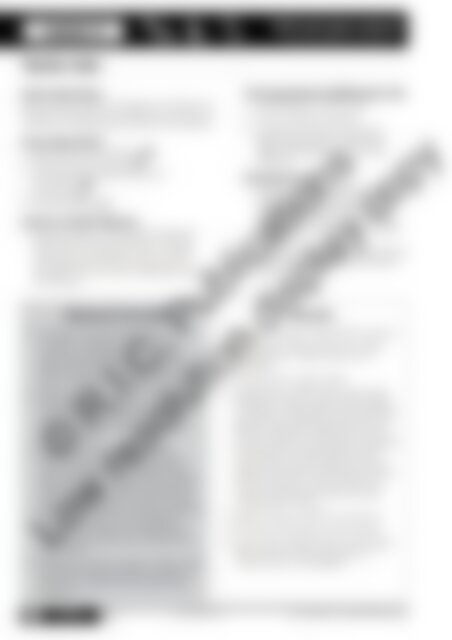6172RB Science a STEM approach Year 2 low res watermark
Create successful ePaper yourself
Turn your PDF publications into a flip-book with our unique Google optimized e-Paper software.
Lesson 4<br />
Earth and space sciences<br />
OUR RESOURCEFUL WORLD<br />
Teacher notes<br />
<strong>Science</strong> inquiry focus:<br />
What do we use Earth’s minerals for and where are<br />
they found? How do minerals get from a source to<br />
a factory and what happens to them at the factory?<br />
<strong>Science</strong> Inquiry Skills:<br />
• Questioning and predicting QP<br />
• Planning and conducting PC<br />
• Processing and analysing data and<br />
information PA<br />
• Evaluating E<br />
• Communicating C<br />
<strong>Science</strong> as a Human Endeavour:<br />
• Students observe, ask questions about and<br />
describe how we mine minerals, including<br />
rocks, gems and metals for use in a variety<br />
of products and how these <strong>res</strong>ources are<br />
transferred from a mine to a factory for smelting<br />
and refining.<br />
Background information<br />
• A mineral is a solid material that is<br />
inorganic, meaning it is not alive and<br />
never was. Scientists have discovered<br />
approximately 2000 different minerals,<br />
which can be categorised into three main<br />
groups—metals, rocks and gems/crystals.<br />
• Minerals can be found on or under Earth’s<br />
surface and are extracted by mining.<br />
The type of mining required (surface or<br />
underground) depends on the mineral<br />
being extracted.<br />
• To extract minerals in the most costeffective<br />
and environmnetally-friendly<br />
way, scientists locate the minerals using<br />
high-tech equipment and perform tests to<br />
examine the type, quality and quantity of<br />
the mineral to assess if it is worth mining.<br />
Miners then use tools and heavy machinery<br />
to carefully extract the mineral before<br />
sending it to a factory for smelting and<br />
refining. Finally, the land is <strong>res</strong>tored to its<br />
natural state.<br />
• Minerals are used to produce metal, crystal<br />
and stone products used for a variety of<br />
electronic, household and infrastructure<br />
purposes.<br />
Technology/Engineering/Mathematics links:<br />
• participating in an online quiz<br />
• taking a digital photograph<br />
• uploading, <strong>res</strong>izing and printing a<br />
digital photograph or uploading a<br />
digital photograph to a class blog<br />
(optional)<br />
Assessment focus:<br />
• Use the photograph of each group’s<br />
sorted minerals to assess the student’s<br />
inquiry skills and their ability to sort<br />
different minerals that occur naturally<br />
on Earth into groups of different types<br />
of minerals.<br />
• Use observations to assess the student’s<br />
understanding of minerals during the<br />
online quiz.<br />
Resources<br />
• Completed copies of page 80 from Lesson 1<br />
• Online video—Real world science: Rocks<br />
and minerals at <br />
• Grassed area or large sandpit<br />
• Large plastic tub filled with sand and the<br />
fol<strong>low</strong>ing ‘minerals’: gold and silver glitter<br />
to rep<strong>res</strong>ent metal-based mineral particles;<br />
gold and silver glitter pipecleaners (cut in<br />
half and rolled into a ball) and aluminium<br />
foil (scrunched into small balls) to rep<strong>res</strong>ent<br />
load deposits of metal-based minerals;<br />
small, rough limestone-based rocks and<br />
pebbles to rep<strong>res</strong>ent rock-based minerals;<br />
and rock salt and a variety of small and<br />
medium rhinestones to rep<strong>res</strong>ent gem/<br />
crystal-based minerals<br />
• Digital camera or iPad® for each group.<br />
• One piece of A4 paper for each group<br />
• Online video—Modern Mining—How Eagle<br />
Mine produces nickel and copper at<br />
<br />
© R.I.C. Publications<br />
Low <strong>res</strong>olution display copy<br />
90 <strong>Science</strong>:<br />
A <strong>STEM</strong> APPROACH<br />
YEAR<br />
2<br />
978-1-925431-95-7 R.I.C. Publications® – www.ricpublications.com.au


















